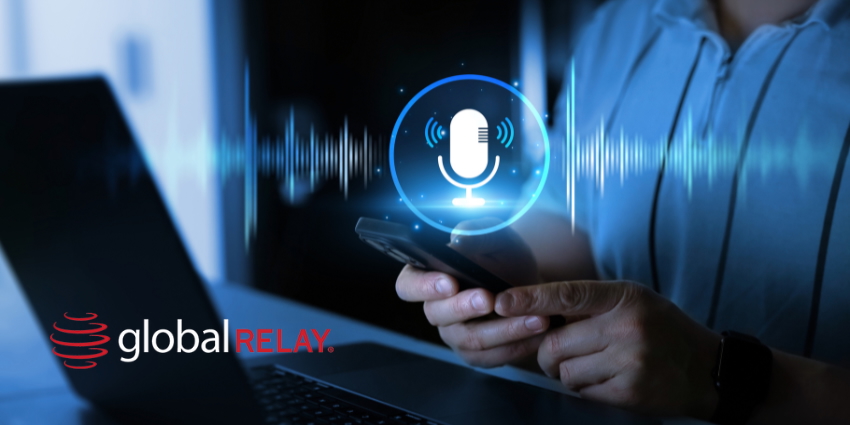In an era where artificial intelligence is revolutionizing business processes, voice compliance is undergoing a dramatic transformation. Here we explore how Large Language Models (LLMs), high-powered GPUs, and evolving regulations are reshaping the way organizations handle voice data ─ especially in regulated industries.
The AI Breakthrough in Voice Transcription
Just a year ago, the quality of voice transcription tools could be described as modest at best. That changed with the release of sophisticated, open-source AI models capable of transcribing speech with near-human accuracy ─ even in difficult conditions.
“When we first turned this AIs on, we were blown away,” says Donald McElligott, VP Compliance Supervision, at Global Relay. “It handled 57 languages, weird accents, and flubbed words ─ it just works,” McElligott says. “We threw everything at it: Portuguese, dialects of Chinese, bad audio quality, even near-unintelligible garbage recordings. It passed with flying colors.”
With support for 57 languages, Global Relay’s tests confirmed the models could transcribe even heavily accented or low-quality audio with exceptional precision. This leap enabled a new era of accurate record-keeping ─ a critical factor for regulated industries.
To harness this technology, Global Relay made a bold move ─ investing millions into NVIDIA GPU farms. This in-house infrastructure allows them to run the largest AI models locally, avoiding public cloud-based costs and latency.
“It’s incredibly processing intensive,” McElligott explains. “But running it in our own data centers means we control the cost and the speed.”
Transcribed voice calls now serve not just as records, but as searchable, analyzable data. This enables targeted supervision ─ finding key moments in hours-long conversations with pinpoint accuracy.
The Voice Challenge: Putting AI to the Test
To prove the point, Global Relay hosted what they dubbed a “Voice Challenge.” Customers were invited to bring mystery voice samples ─ no pre-sanitized demos, just raw, real-world recordings. “Our engineers were crossing their fingers,” McElligott recalls, laughing. “Some of the audio was truly unreadable. And yet, once transcribed, it all clicked.”
The AI didn’t just transcribe ─ it made meaning clear, allowing users to re-listen with the transcript and suddenly understand everything. “It was better than a human transcriber. That’s when we knew: this is now a legitimate record-keeping tool.”
Compliance Meets AI Supervision
With the transcription quality secured, Global Relay added the next layer: intelligent supervision. Organizations can now set policies in plain English ─ flagging potential risk topics like insider trading or data leaks. When calls are transcribed, the system indexes them, flags key moments and allows compliance teams to jump to precise timestamps instead of scrubbing through hours-long audio.
The use cases are enormous, especially in markets like Europe where voice supervision is already mandatory. “In the U.S., lawyers still argue it’s safer not to have a transcript,” McElligott explains. “Because once it’s written, it’s discoverable. But in Europe, the regulatory mandate makes that debate moot.”
Industry Use Cases
- Finance has long led the charge in compliance, but other sectors are finding use for compliance.
- Healthcare and insurance are exploring AI-powered archiving for risk detection such as off-label promotions or attempts to influence prescriber behavior.
- Oil, gas, and commodities firms are warming to AI to find value in data they would otherwise delete.
“There’s real value now,” McElligott says. “Even if you’re not regulated, AI helps you detect risks proactively.”
Global Regulation – Where are we?
In Europe, voice compliance is already a regulatory expectation. In the U.S., it’s a battleground between compliance officers and lawyers.
The lag in the U.S. is problematic. “In the UK and EU, regulators have drawn clear lines. In the U.S., it’s still vague,” McElligott says. “Eventually, there’ll be a scandal ─ such as a voice recording that uncovers wrongdoing ─ and the rules will snap into place,” he predicts.
Until then, U.S. firms often exploit the ambiguity to avoid costly infrastructure. But Global Relay believes the value of AI is becoming too great to ignore ─ even outside of traditional compliance-heavy sectors like finance.
Summary
The impact of AI on voice compliance isn’t theoretical anymore. And as Global Relay’s McElligott puts it, the question isn’t whether organizations will adopt it ─ it’s when, how, and at what cost.
From revolutionary transcription to proactive supervision and even conversational archives, voice is finally becoming a key player in the compliance world.







